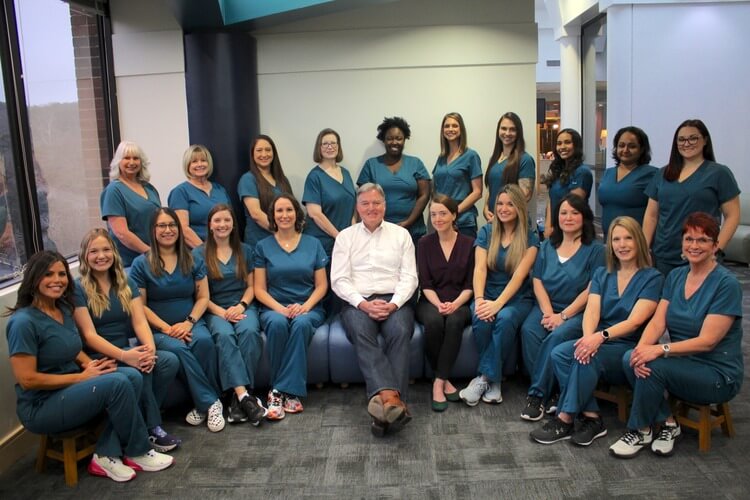According to the American Association of Orthodontists, every child should have an orthodontic evaluation by the age of 7 years old. Although treatment may not begin right away, an early examination allows us to monitor your child’s development through our Observation program. This recall program is offered to you at no charge and covers all observation appointments needed until your child is ready to begin treatment.
We know how enticing these direct-to-consumer orthodontic companies can sound, but we advise you to be cautious and skeptical before committing to one. Working directly with an orthodontist not only helps you achieve successful tooth movement, but we can also intercept potential problems throughout your treatment, like tooth fractures or a misaligned bite. The risk of creating a serious dental problem by unsupervised orthodontic care is higher than any potential financial savings. If you’re still unsure, check out this list of questions to consider by the American Association of Orthodontists.
Depending on your treatment needs, most patients in braces visit us every 4 to 8 weeks.
Many patients will have some discomfort after their braces are first put on or adjusted during treatment. We recommend patients manage this with whichever pain medication you might commonly take for a headache, in accordance with the dosage and directions given by your doctor or pharmacist. The lips, cheeks and tongue may also become irritated for one to two weeks as the mouth becomes accustomed to the surface of the braces. Overall, discomfort should be short-lived and mild to manage. If you or your child are experiencing prolonged pain or extreme discomfort, please contact us.
Two-phase orthodontic treatment is a specialized process that combines teeth straightening with facial and jaw changes. With early treatment (Phase 1) Dr. Stephen Robirds has the ability to correct the growth of your child’s upper and lower jaws, giving the adult teeth enough room to come in straight. This early correction may prevent later removal of permanent teeth to correct overcrowding and/or surgical procedures to align the upper and lower jaws.
Another good reason to consider early treatment is when the position of the teeth are changing the child’s appearance to the extent that their self-esteem is negatively affected.
Once the first phase of treatment is complete there is a resting period while the remaining permanent teeth are erupting. Dr. Stephen Robirds will continue evaluating your child about every 6 months to determine the proper time to begin any necessary second-phase treatment.
We often see patients whose jaws are simply not big enough for all of their teeth to come in at the correct position and alignment. In order for your orthodontist to position the teeth in a straight alignment within the jawbone, it may be necessary to remove one or more teeth. In many cases our team will refer you to your dentist or an oral surgeon for tooth extractions.
This applies to both baby teeth and permanent teeth. For interceptive orthodontics, where your doctor is guiding the position of the teeth as they come into the mouth at an early age, he or she may recommend removing baby teeth to create space.
Surgical orthodontics or “Orthodontics in conjunction with Jaw Surgery” may be necessary for someone whose upper and lower jaws, which hold the teeth, are out of position. Consequently, the upper and lower teeth don’t fit, impairing the ability to bite, chew or speak. You may recognize these situations as severe underbites, overbites or open bites. Dr. Stephen Robirds will work in conjunction with an oral and maxillofacial surgeon to position your jaws and teeth for optimal function.
Jaw Surgery is performed by an Oral and Maxillofacial surgeon on patients who have finished growing – 14 to 16 years for females and ages 17 to 21 years for males. Orthodontic treatment begins several months before Jaw Surgery can take place. The purpose is so that Dr. Stephen Robirds can align the teeth so that they fit correctly after surgery is performed. Orthodontic treatment then continues for several months after surgery to bring the teeth into their final, optimal positions for good function.


Our team has delivered outstanding pediatric dental care in North Austin for over 45 years. We are committed to providing our community with safe, gentle, high-quality dental care.
Should you have any questions or concerns regarding your dental care, we are more than happy to discuss how you can achieve a beautiful and healthy smile.
As a top pediatric dentist in North Austin, we have helped hundreds of families achieve their oral health goals and are eager to help you and your family do the same.
Pediatric Dental Professionals © 2025 | All Rights Reserved